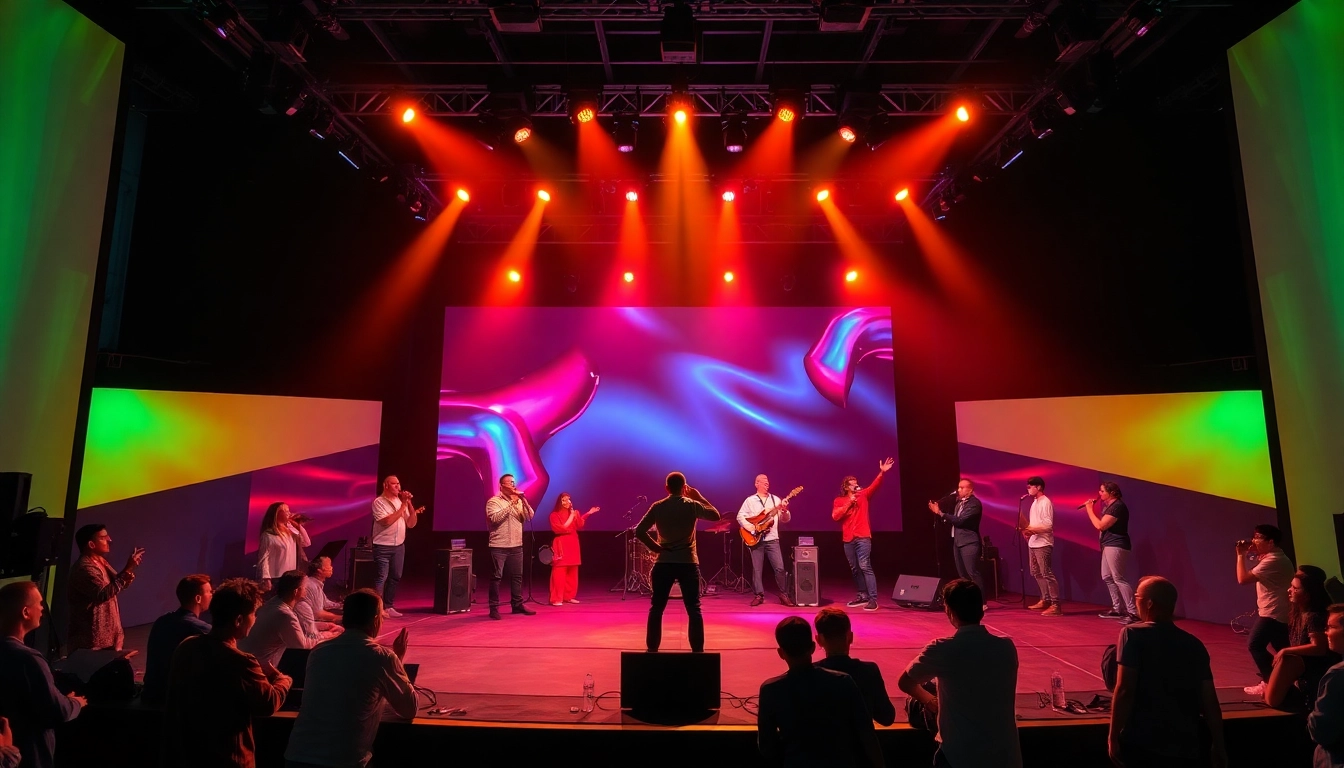Understanding the Live Stream Audience
As the digital landscape continues to evolve, the importance of engaging your Live Stream Audience cannot be overstated. Understanding the demographics, preferences, and challenges faced by viewers can significantly enhance your live streaming efforts. This understanding lays the foundation for a successful live streaming strategy that not only attracts viewers but also keeps them engaged throughout the broadcast.
Defining Your Live Stream Audience Demographics
To create effective live content, it’s crucial to define your target audience based on demographics including age, gender, geographic location, and interests. Most live stream viewers are between the ages of 18 and 34, according to various studies. However, it’s essential to note variations based on content categories:
- Gaming: Predominantly male, ages 18-34.
- Education: A balanced audience, with many viewers aged 25-50 who are looking for professional advancement.
- Fitness and Lifestyle: Often skewing female, ages 25-45, focused on health and wellness.
By identifying these demographics, you can tailor your content to resonate significantly with your audience’s interests and needs.
Common Interests and Behaviors of Live Stream Viewers
Understanding the interests and behavioral traits of your live stream audience can help you craft more engaging content. For instance, most viewers appreciate:
- Interactivity: Audiences enjoy being part of the broadcast. They want their questions answered and to have a stake in the content being presented.
- Community: Many viewers are drawn to the community aspect of live streaming. They appreciate the opportunity to connect with others who share similar interests.
- Authenticity: Audiences tend to gravitate towards streamers who are genuine, relatable, and engaging. This authenticity fosters loyalty.
Monitoring these interests and behaviors through analytics can inform content adjustments and foster deeper engagement.
Challenges Faced by Live Stream Audiences
Even with an engaging format, challenges exist for viewers. Common issues include:
- Technical Problems: Viewers may experience buffering, low-quality streams, or connection drops, which can lead to frustration.
- Content Overload: With countless streams available, users might find it challenging to decide what to watch, leading to scrolling fatigue.
- Lack of Interaction: Audiences may disengage if they feel their input is not welcomed or acknowledged.
Addressing these challenges can lead to a more fulfilling viewer experience, ensuring higher retention rates and repeat viewership.
Preparing for Your Live Stream
Preparation is crucial for a successful live stream. This section covers the essential components necessary to engage your audience effectively before going live.
Essential Equipment for Engaging the Live Stream Audience
Investing in the right equipment can greatly enhance the quality of your stream. Here’s a rundown of the essentials:
- Camera: A high-definition camera ensures a clear image. DSLR cameras are popular among streamers for this reason.
- Microphone: Good audio quality is vital; consider a USB condenser microphone for clear voice capture.
- Lighting: Ensure proper lighting to enhance video quality. Ring lights or softboxes can help illuminate your face while avoiding harsh shadows.
- Streaming Software: Utilize platforms such as OBS or Streamlabs for a professional streaming experience and custom overlays.
With quality equipment, you’ll not only captivate your audience from the start but also present yourself as a thorough and serious content creator.
Creating a Compelling Live Stream Agenda
Developing a detailed agenda for your live stream can keep your content organized and engaging. Start by outlining key topics you wish to cover. Include time slots for:
- Introductory Remarks: Introduce yourself and outline the purpose of the stream.
- Main Content: Break this into segments to maintain interest and allow for audience questions.
- Interactive Segments: Allocate time for polls or Q&A sessions to foster viewer engagement.
- Wrap-Up: Summarize the live stream and provide information on how viewers can participate in future content.
Creating an agenda not only streamlines your presentation but also mirrors professionalism, guiding your viewers smoothly through your content.
Visual and Audio Quality: Captivating Viewers from the Start
The visual and audio quality of your stream are paramount to maintain viewer interest and convey credibility. Consider the following practices:
- Test Your Setup: Always perform a test run before going live to check for audio levels, video quality, and lighting.
- Background Setup: Choose a clutter-free and themed backdrop that complements your stream’s content, enhancing contextual relevance.
- Engagement Tools: Use tools that allow you to switch between scenes or presentations smoothly, keeping the visual aspect dynamic.
Delivering a high-quality stream can significantly influence the viewer’s perception, fostering a professional image and encouraging loyalty.
Engagement Techniques for Live Streaming
Maximizing audience engagement during live streams requires deliberate techniques and strategies. Here are some ways to keep your audience involved.
Interactive Polls and Q&A Sessions for Live Stream Audiences
Interactive elements such as polls and Q&A sessions can heighten viewer participation. They provide direct avenues for users to engage, making the stream more interactive and personalized. Here’s how to effectively implement these:
- Utilize Polling Tools: Platforms like Slido or StreamYard can enhance interaction by allowing real-time feedback on topics covered.
- Encourage Questions: Prompt viewers to ask questions at various points in your stream, fostering a two-way communication channel.
- Incorporate Results: Use poll results dynamically within your content, showing the audience their input matters and building a responsive environment.
By cultivating an interactive atmosphere, you’ll not only retain viewers’ attention but also enrich their experience through valuable participation.
Gamification: Boosting Interaction with Your Live Stream Audience
Gamifying your live stream content can turn passive viewers into active participants. Incorporate game elements such as:
- Quizzes and Trivia: Host quizzes related to your stream content with small prizes to encourage participation.
- Challenges: Set challenges for viewers, such as submitting their own content or creative ideas based on the stream theme.
- Leaderboards: Display leaderboards for participants in competitive segments, motivating viewers to engage more actively to climb the ranks.
Gamification introduces fun, transforming the viewer experience while promoting greater viewer loyalty and community involvement.
Incorporating Music and Visuals to Enhance Audience Experience
The use of music and compelling visuals can create a captivating atmosphere that enhances viewer experience. Pay attention to these aspects:
- Background Music: Utilize appropriate royalty-free tracks that resonate with the mood of your content, creating a pleasant auditory experience while avoiding copyright issues.
- Visual Elements: Use graphics, animations, or overlays that align with your theme, keeping the visuals lively and engaging.
- Dynamic Presentation: Alternative segments with visual content ensures a break from purely spoken segments, keeping the audience visually stimulated.
A well-curated audio-visual experience significantly enhances engagement, keeping audiences glued to your stream from start to finish.
Measuring Audience Engagement
To understand the effectiveness of your engagement techniques, you must measure audience interaction. Here’s how to gauge engagement accurately:
Key Metrics to Assess Live Stream Audience Interaction
To evaluate how well your audience engages with your streams, focus on key performance indicators (KPIs):
- Viewer Count: Track how many viewers join your stream in real-time and how this changes throughout the event.
- Chat Activity: Monitor how actively viewers participate in chat interactions, asking questions and sharing feedback.
- Poll Participation: Analyze the percentage of viewers who engage with polls or quizzes compared to total viewers.
- Viewer Retention Rate: Measure how many viewers stay for the entirety of the stream versus those who leave early.
Utilizing these metrics provides valuable insights into viewer behavior, informing future content decisions.
Feedback Collection Methods for Improvement
Collecting feedback is crucial for continuous improvement. Here are effective methods:
- Surveys: Create post-stream surveys asking viewers about their experience and content preferences, ensuring they are brief and incentivized.
- Direct Engagement: Invite feedback live during the stream, creating a culture of open communication.
- Social Media Monitoring: Track mentions and comments about your stream on social platforms to gather qualitative feedback.
Implementing ongoing feedback can help refine your strategies to meet viewer expectations and enhance their overall experience.
Analyzing Viewer Retention to Optimize Future Streams
Retention analysis provides insights into what content resonates most with viewers. Break down viewership into segments to identify patterns:
- Segment Retention Rates: Compare retention across different content segments to identify where viewers drop off.
- Highlight High-Interest Segments: Use insights from retention analysis to prioritize or adjust content themes in future streams.
- Engagement Timing: Analyze what times during the stream see the most engagement, adjusting future stream formats accordingly.
Using this data-driven approach allows for iterations and refinements that lead to increasingly successful streams.
Innovative Approaches to Grow Your Live Stream Audience
To expand your live stream audience, you must implement innovative strategies tailored to current digital trends. Below are effective methods to consider:
Leveraging Social Media to Attract New Viewers
The synergy between social media and live streaming has never been more critical. Use the following strategies:
- Cross-Promotion: Use platforms like Instagram, Twitter, and Facebook to promote your upcoming streams, generating buzz and anticipation.
- Content Teasers: Share snippets or teasers of your live content to intrigue and entice followers to tune in.
- Engagement Posts: Create engaging posts that prompt followers to share their thoughts or questions to be addressed in the live stream.
Effective use of social media can significantly boost visibility and attract new followers to your live broadcast.
Collaborations with Influencers to Expand Audience Reach
Partnering with influencers can introduce your stream to wider audiences. Consider the following steps:
- Identify Relevant Influencers: Collaborate with influencers who resonate with your content and target audience.
- Joint Streaming Sessions: Host co-streams where influencers can interact with both your audiences, amplifying exposure.
- Influencer Takeovers: Allow influencers to take over your stream for a session, creating excitement and attracting their followers.
Strategic collaborations can not only diversify your content but also significantly enhance reach and engagement.
Utilizing Targeted Advertising to Increase Live Stream Audience Size
Paid advertising can be a powerful tool to grow your audience. Explore platforms such as Facebook Ads or Google Ads for:
- Targeted Campaigns: Focus on specific demographics that match your content’s appeal to convert views into new followers.
- A/B Testing: Experiment with different ad formats and messaging to identify what resonates best with potential viewers.
- Retargeting Ads: Use retargeting techniques to reach users who previously interacted with your content but didn’t commit to following.
Implementing targeted advertising not only attracts a broader audience but also enhances the quality of engagement with interested viewers.



